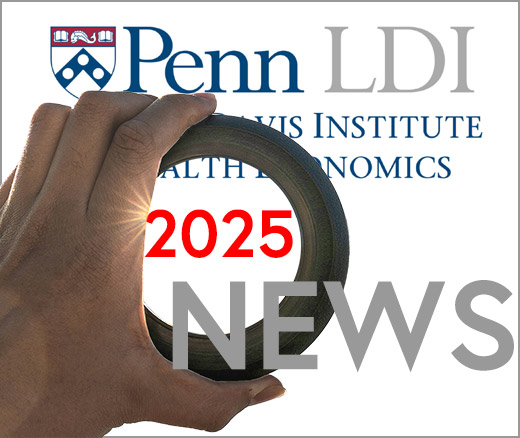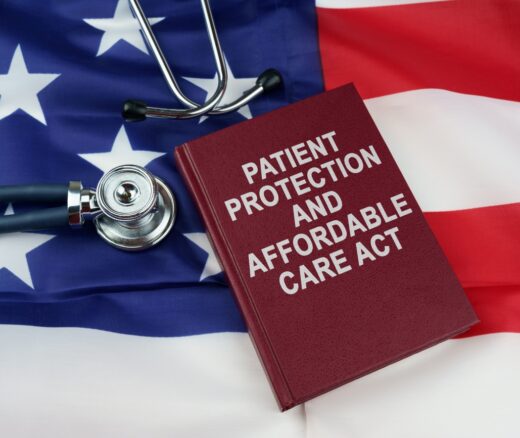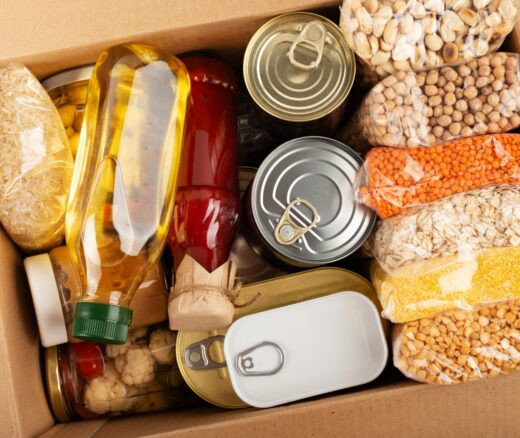
LDI Research Helped Shape Pennsylvania’s New Working Pennsylvanians Tax Credit
Pa.’s New Bipartisan Tax Credit is Designed to be Simple and Refundable – Reflecting Core Points From Penn LDI Researchers Who Briefed State Leaders
Blog Post

Many Americans—even those who have experienced heart attacks—fail to undertake simple actions, such as exercising regularly, that are known to improve their health. But an up-and-coming field, only about 12 years old, shows promise in nudging people to develop positive health behaviors: using gamification in health.
Gamification means using “game elements to motivate participants to change their behavior,” explained LDI Senior Fellow Alexander Fanaroff, Assistant Professor of Medicine, Perelman School of Medicine (PSOM) and a core faculty member in the Center for Health Incentives and Behavioral Economics (CHIBE).
Fanaroff was the lead author of a major study in Circulation last year called Be Active. It found that people at high risk of cardiovascular disease who used fitness trackers in a gamified setting for 12 months increased their daily steps by almost 2,000. Using those figures, Fanaroff estimates that the boost in exercise from the intervention would translate to a 6% lower risk of death from any cause and a 10% reduced risk of mortality from stroke or heart attack. Fanaroff’s co-authors included LDI Senior Fellows Neel Chokshi, Louise Russell, Dylan Small, and Kevin Volpp. The study group recently received a $25 million grant to extend the research project.
“Gamification is a strategy with significant potential,” said Mohan Balachandran, Executive Director of the Way to Health team at the Penn Medicine Center for Health Care Innovation and CHIBE.
During the intervention stage of gamification studies, participants retain rewards if they meet goals that they set ahead of time. The game relies on a basic behavioral economics tenet known as the “immediacy bias,” a preference for short-term over longer-term rewards. “The benefit of, say, physical activity is in the future, but the cost is right away. So gamification makes the benefit more immediate,” explained Fanaroff.
The vast majority of gamification studies use fitness trackers, which tell participants how many steps they walk during the day. “The advantage is that these inexpensive devices write data back into the cloud,” said Balachandran.
While researchers have had some limited success researching medication adherence, sleep, and smoking cessation with gamification, the most fruitful arena has been exercise, which has widespread benefits. “Physical activity is extremely effective at improving health in multiple domains such as heart disease, Alzheimer’s, post-surgery recovery, and so on,” Balachandran noted.
At Penn, fitness-oriented gamification research relies on the Way to Health platform, which automates the technology required to run multisite clinical trials. “So if somebody wants to set up a gamification study, it is very easy because all the core functionality is already built in,” said Balachandran. And once a setup is complete, costs are low regardless of the number of participants.
Research at Penn has shown impressive results. Gamification studies using fitness trackers have increased walking among a wide range of participants, including older adults who have undergone a radical cystectomy (bladder removal), economically disadvantaged individuals at risk for cardiac disease, stroke patients, veterans with Parkinson’s disease, people with peripheral artery disease, potential Alzheimer’s patients, and breast and prostate cancer survivors who are Black and Hispanic.
Health care cost savings are potentially enormous. LDI Senior Fellow Daniel Lee, Assistant Professor of Urology in Surgery at PSOM, has been searching for ways to reduce the high number of complications from bladder removal surgery. “About 60% of people will have a complication after surgery, and 30% to 40% will be readmitted to the hospital. We’ve known for quite a long time that people who are mobile recover better after surgery,” he said. In his small 2025 JAMA Network Open study of 61 post-surgical patients, intervention participants had fewer discharges to a skilled nursing facility or subacute rehabilitation than those in the control group.
Metrics beyond exercise have shown improvement, too. For instance, a 2024 study led by Jeffrey Ebert, Director of Applied Behavioral Science, Nudge Unit at Penn Medicine’s Center for Health Care Transformation and Innovation, found that a behavioral intervention with gamified elements and social competition in a usage-based insurance app reduced handheld phone use among drivers by 20% compared to a control group. A group that additionally received financial incentives dropped handheld phone use by 28%.
Scaled nationwide, this 28% decline would result in 16,000 fewer vehicle crashes a year, estimated Ebert and his co-author, LDI Senior Fellow Mucio Kit Delgado, Associate Professor of Emergency Medicine at PSOM. Many major auto insurance companies offer usage-based apps that rely on telematics to track behaviors such as driving speed.
“To deliver the gamification intervention, the only costs for a usage-based insurance program would be what’s needed to update the app. With a little up-front effort and expense on the part of insurance companies, millions of drivers could benefit from safer driving and lower premiums,” said Ebert.
Most studies using gamification include a follow-up period in which researchers assess whether positive changes persist after the intervention ends. In general, gains decline over time but remain higher than at baseline.
For example, in a small, non-randomized 2025 study of veterans with Parkinson’s disease led by LDI Senior Fellow Kimberly Waddell, Assistant Professor of Physical Medicine and Rehabilitation at PSOM, participants increased their daily steps over baseline by 1,294 during the six-week intervention period. Four weeks later, the increase in steps declined to 546, but remained significant. The automated, remote trial eliminated the need for in-person visits and reduced staffing, making this “a lower-cost, scalable design” for increasing physical activity in patients with Parkinson’s disease, the authors wrote.
On December 16, 2025, Penn announced funding for a $25 million project led by Fanaroff and LDI Senior Fellow Kevin Volpp, Director of CHIBE. Echoing the design of the Be Active study, the new effort will last six years and recruit patients from 15 states and the District of Columbia who are served by the nonprofit Ascension health care system. Gamification pioneer Mitesh Patel, former director of the Penn Medicine Nudge Unit, is a crucial connection—he is now Chief Clinical Transformation Officer and National Vice President at Ascension and often co-authors Penn studies.
The length of the study is a key factor because earlier gamification work has not lasted long enough for exercisers to receive significant heart-health benefits. “Despite overwhelming observational evidence that higher physical activity is associated with better cardiovascular health, no prior randomized trial has been large enough to prove that increasing activity actually prevents heart attacks and strokes and to quantify the magnitude of these effects. Results from this landmark trial have the potential to transform cardiovascular prevention guidelines, reduce mortality, improve quality of life, and dramatically lower health care costs,” said Fanaroff.
One of the less-reported findings in gamification research is that, in terms of strategies, one size does not fit all. “Different people like different kinds of games. Some people respond to competition and others prefer more collaborative games. There’s a lot of interest around precision medicine—which would involve tailoring the game to the participant,” said Neel Chokshi, an LDI Senior Fellow and Associate Professor of Medicine and Cardiology at PSOM.
These ideas were tested in a 2020 study in PLOS One co-authored by Patel, Balachandran, and others. The researchers found that participants characterized by extraversion (outgoing personalities), openness, and grit (determination) did best when put in a competitive gamification situation. Participants were placed in teams of three and competed against one another via a leaderboard. “Health care systems can use proxies for finding information that could place a patient in a phenotype. To find out if a patient is extroverted, for example, we try to figure out how many contacts they have in the medical record or see if they have a provider of a different gender, which is an indication of openness,” said Balachandran.
After research on gamification comes to a close, participants tend to regress. “But gamification programs do not need to end. They are cheap to run. Once you’ve got your Fitbit or whatever, why turn it off?” said Balachandran. In other words, just as patients continue to take statins for cholesterol control, clinical settings that introduce gamification programs might keep them working…forever.
The study “Wearable Devices as Facilitators, Not Drivers, of Health Behavior Change,” was published on February 3, 2015 in JAMA. Authors include Mitesh S. Patel, David A. Asch, and Kevin G. Volpp.
The study, “Effect of Gamification With Social Incentives on Daily Steps After Stroke,” was published on March 28, 2022 in JAMA Neurology. Authors include Kimberly J. Waddell, Mitesh S. Patel, Kayla Clark, Tory O. Harrington, and S. Ryan Greysen.
The study, “Effect of Gamification, Financial Incentives, or Both to Increase Physical Activity Among Patients at High Risk of Cardiovascular Events: The BE ACTIVE Randomized Controlled Trial,” was published on May 21, 2024 in Circulation. Authors include Alexander C. Fanaroff, Mitesh S. Patel, Neel Chokshi, Samantha Coratti, David Farraday, Laurie Norton, Charles Rareshide, Jingsan Zhu, Tamar Klaiman, Julia E. Szymczak, Louise B. Russell, Dylan S. Small, and Kevin G. Volpp.
The study, “A Randomized Trial of Behavioral Interventions Yielding Sustained Reductions in Distracted Driving,” was published on July 29, 2024 in PNAS. Authors include Jeffrey P. Ebert, Ruiying A. Xiong, Neda Khan, Dina Abdel-Rahman, Aaron Leitner, William C. Everett, Kristen L. Gaba, William J. Fisher, Catherine C. McDonald, Flaura K. Winston, Roy M. Rosin, Kevin G. Volpp, Ian J. Barnett, Douglas J. Wiebe, Scott D. Halpern, and Mucio Kit Delgado.
The study, “Cost-Effectiveness of Gamification, Financial Incentives, or Both to Increase Physical Activity Among Patients With Elevated Risk for Cardiovascular Disease,” was published on June 17, 2025 in Circulation: Cardiovascular Quality and Outcomes. Authors include Louise B. Russell, Kevin G. Volpp, Mitesh S. Patel, Neel P. Chokshi, Samantha Coratti, David Farraday, Laurie Norton, Charles Rareshide, Jingsan Zhu, Tamar Klaiman, Julia E. Szymczak, Dylan S. Small, and Alexander C. Fanaroff.


Pa.’s New Bipartisan Tax Credit is Designed to be Simple and Refundable – Reflecting Core Points From Penn LDI Researchers Who Briefed State Leaders

Focusing in on Some of Health Care Policy’s Most Urgent Issues

Highlighting 10 Ways LDI Fellows Put Their Research Into Action

From AI-Powered Public Health Messaging to Stark Divides in Child Wellness and Medicaid Access, LDI Experts Highlight Urgent Problems and Compelling Solutions

An LDI Expert Offers Three Recommendations That Address Core Criticisms of the ACA’s Model

Administrative Hurdles, Not Just Income Rules, Shape Who Gets Food Assistance, LDI Fellows Show—Underscoring Policy’s Power to Affect Food Insecurity